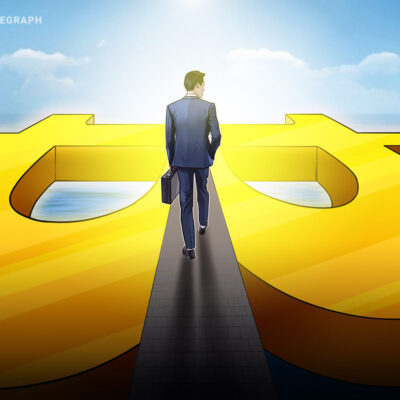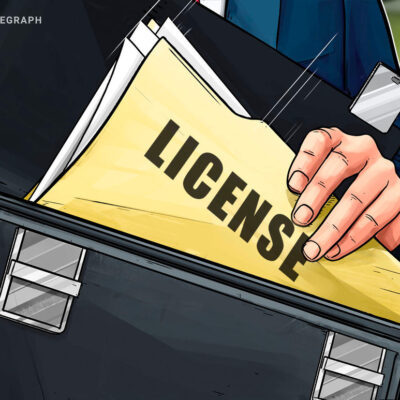On Jan. 31, Meta, formerly known as Facebook, announced that it was pulling from its stablecoin project, Diem, formerly known as Libra. Intellectual property and other assets related to the operations of the Diem Payment Network were to be sold to Silvergate Capital Corporation, essentially meaning the end to Mark Zuckerberg and his corporations’ stablecoin aspirations, at least in their current shape. This also marks the end of a once-groundbreaking initiative that was revealed in 2019 with a promise to bring a global alternative to fiat money to Facebook’s 2-billion-strong user base. Here is how this plan went from the initial announcement to the shutdown.
Phase 1: The white paper
The news of Facebook launching its own digital currency came as a boost of optimism for the social media giant, whose brand in the late 2010s came to be associated with the lack of privacy and ethics, as well as disfunctional governance.
On June 18, 2019, the company released the white paper of its prospective global stablecoin under the name “Libra.†The prospective asset was to be backed by its own blockchain on the operational side and by a reserve of various assets (a basket of bank deposits and short-term government securities) on the financial level.
From the very beginning, Libra didn’t try to pretend to be a decentralized cryptocurrency — its governance mechanism was designed as a consortium (the “Libra Associationâ€) including big-name companies such as Mastercard, PayPal, Visa, Stripe, eBay, Coinbase, Andreessen Horowitz, Uber and others. Facebook itself was “expected to maintain a leadership role.†The social media giant also planned to maintain its influence by running a wallet, Calibra.
The project’s original positioning was to serve not as a speculative asset but as a service payment tool. The minting of new tokens was tied to the process of buyout by “authorized resellers†from among the association’s members.
Initial reception
The white paper received mixed feedback from the crypto community. Some of the industry opinion leaders decried the compromises that Facebook’s project had made in terms of both decentralization and security. Bitcoin (BTC) advocate Andreas Antonopoulos, for example, denied Libra the status of cryptocurrency on the basis that it lacked any of crypto’s fundamental characteristics, such as being public, neutral, censorship-resistant and borderless.
Others, however, preferred to focus not on the actual project’s design but on Libra’s potential effects on global crypto adoption. “Some of the biggest companies in the world are starting to recognize the promise of cryptocurrency and see its potential for changing the way consumers and businesses interact globally,†said Tron founder and CEO Justin Sun at the time.
But perhaps the most important thing about the Libra project was its potential to sidestep both existing crypto and fiat currencies alike — not by the virtue of its technical or design superiority but solely due to the network effects of having over 2 billion users on board from day one.
As Ross Buckley, a digital economy expert and professor at the University of New South Wales, warned in his paper, “Libra is perhaps the ultimate example of something that is highly likely to move from ‘too small to care’ to ‘too big to fail’ in a very short period of time […] This is an alternative money.†Buckley surely wasn’t alone in his fears — the obviousness of Libra’s inherent power predestined the enormous pressure it would get from the regulators.
Phase 2: Regulatory pushback
It took the United States Senate less than a month to get Libra co-creator David Marcus to testify at a special hearing, where the Facebook executive was exposed to a fervent grilling. Notably, it was not only Senator Sherrod Brown but also his perpetual opponent Senator Pat Toomey, who bombarded Marcus with hard questions (although Toomey also called not to “strangle the baby in the cribâ€). The news about Facebook’s private currency hadn’t gone unnoticed even by the then-President Donald Trump, who reacted in his signature expressive manner:
If Facebook and other companies want to become a bank, they must seek a new Banking Charter and become subject to all Banking Regulations, just like other Banks, both National and International.
The pushback was not confined to the United States. In September 2019, French Finance Minister Bruno Le Maire declared that his country and the whole of Europe wouldn’t tolerate Facebook’s new project because the “monetary sovereignty of states is at stake.†Weeks later, the Bank of England issued a warning that, for it to become legal in the United Kingdom, Libra would have to meet all the necessary standards of traditional banking compliance.
What followed these statements was the first wave of backouts from some of the Libra Association’s founding members. With such companies as PayPal, Visa, Mastercard, eBay and Mercado Pago quitting the project, its image took a huge hit.
But back then, Facebook speakers played down the significance of these events. “Of course, it’s not great news in the short term, but in a way it’s liberating. Stay tuned for more very soon. Change of this magnitude is hard. You know you’re on to something when so much pressure builds up,†wrote Marcus on Twitter.
By October 2019, five European nations — France, Germany, Italy, Spain and the Netherlands — had created an unofficial task force to prevent Libra’s launch in Europe. The pressure rose to the point when the CEO of the Netherlands’ largest bank, Ralph Hamers, publicly commented on the possibility to cut any operations with Facebook.
Phase 3: The rebranding that didn’t help
Facebook’s response to the pressure came in April 2020 in the form of “Libra 2.0.†The updated white paper introduced four key changes “to address regulatory concerns,†most notably of which was the switch from a single currency to a family of stablecoins, each backed by a single national currency (such as the U.S. dollar, euro and British pound).
As Brieanna Nicker from the Brookings Institute wrote at the time, “It also could be seen as a scaling back of Facebook’s ambitions, for the proposal is now more like a PayPal with a different technological backbone than a competitor to sovereign currencies.†Among other stated changes were the enhanced compliance framework and transition from a permissioned to permissionless blockchain within five years.
On Dec. 1, 2020, Facebook complemented the technical adjustments with a brand change: Libra became Diem, and Calibra became Novi. According to the company’s statement, this transition should have marked “a new day for the project.†The renaming came a week after the disclosure of a plan to launch the first USD-backed stablecoin.
At that time, the second version of the project was still officially opposed by the G7. Olaf Scholz, the current federal chancellor of Germany, who then served as a finance minister, called Diem “a wolf in sheep’s clothing,†stating that the name change hadn’t convinced the regulators.
Further pullbacks
The year 2021 didn’t bring good news for Diem. As the long-awaited launch has been delayed once again (by that time, Switzerland’s Financial Market Supervisory Authority still hadn’t granted grant Switzerland-based the Diem Association a payment license), on Feb. 23, the European Central Bank demanded from the European Union lawmakers a veto power to unilaterally block any private stablecoin projects when necessary.
In September 2021, The Washington Post reported on the ongoing attempts of Facebook’s top management to reach some compromise with U.S. regulators. But apparently, the negotiations stalled, as Marcus’ claim that Diem “has addressed every legitimate concern†caused public blowback from lawmakers.
The chairwoman of the House Financial Service Committee, Maxine Waters, retorted that rebranding had nothing to do with solving the major privacy, national security, consumer protection and monetary policy concerns. Top Republican member of the same committee, Representative Warren Davidson, sardonically mimicked Marcus’ blog post:
I’m not sure how Facebook and the Diem Association could have addressed ‘every legitimate concern’ whenever there’s overarching regulatory uncertainty that permeates many facets of the crypto space.
The last glimpse of hope sparked when, in a partnership with Binance, Facebook finally launched the pilot version of Novi Digital Wallet — a vital part of the planned Diem ecosystem. But it didn’t last longer than a few hours before a group of five senators wrote a joint letter to Zuckerberg with an unequivocal demand to “immediately discontinue†the project. In a casuistic response, the Diem Association tried to distance itself from Facebook.
On Dec. 1, Marcus, the formal head of Novi and the face of the Meta/Diem project, announced his resignation. Marcus, who had been working at Facebook since 2014, didn’t go into detail on the reasons for his decision, joining the list of Facebook’s key crypto figures who left in 2021, including fellow Diem co-founders Morgan Beller and Kevin Weil. With Marcus’ departure, it was hard to expect anything good in the upcoming 2022.
Is this the end for Diem?
Speaking to Cointelegraph immediately after the news of Facebook parting with Diem, Buckley, who had foreseen the regulatory reaction to the project back in 2019, shared his conviction that this is indeed the end of the stablecoin initiative: “I would be really surprised if it survives. It is a project designed to benefit from Facebook’s scale and reach and is now quite a scarred product.â€
Buckley believes the company “profoundly mishandled the entire announcement†back in the day, overplaying its card as one of the biggest tech companies in the world. It surely wasn’t well-received by the wide range of regulators across the globe, as a digital currency with a user base of 2 billion was obviously far beyond the scope of a social media business:
Facebook took the classic tech company approach to this of surging ahead and then seeking forgiveness rather than seeking permission upfront. This may well work with telecoms […] but financial regulators expect to be treated with respect, as do governments with respect to their monetary sovereignty. The sharp resistance was in part because financial regulators and governments first learned of this from the media, not directly and well in advance, from Facebook.
Apart from Zuckerberg’s bravado that possibly played its role in Libra/Diem’s ultimate demise, this case could be seen as a hint to something more alarming. Facebook’s project of the world’s first global digital currency with an immediate mass adoption boost provoked instantaneous and concerted resistance from regulators.
What that means is that we can probably expect a response no less stiff and immediate should any other digital currency rise up to Diem’s adoption potential. As Buckley puts it, “The ability to mint the currency of the realm is a core element of sovereign capacity and has been for centuries.†And there’s no reason to believe that it won’t be defended ferociously. Hopefully, Diem’s example will serve as a reminder that the importance of regulatory negotiations should not be underestimated.






